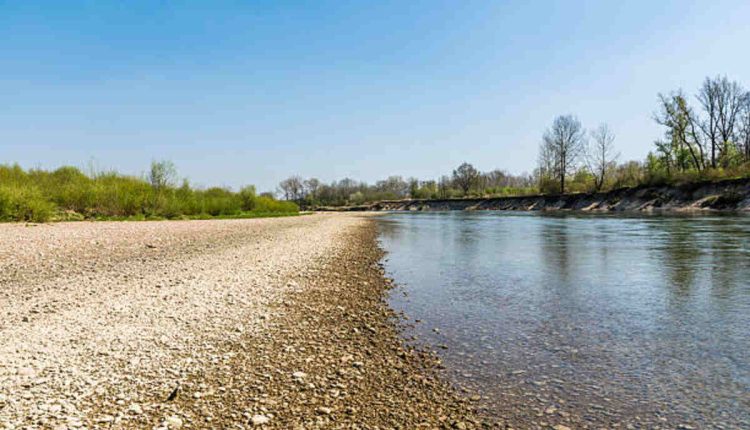Buffalo River Levels
The Buffalo River rises dramatically after heavy rain. This scenic river is primarily rainfall-driven, so conditions can change drastically from one month to the next.
The water quality of the river is monitored at 32 different locations throughout the park. Bacterial indicators (fecal coliform and E. coli) and turbidity are the primary focal points of monitoring.
Floating Conditions
The Buffalo River offers a wide variety of experiences, from a relaxing two-hour float to a multi-day adventure. The type of float you choose depends on your experience, the duration of your trip, and the equipment you have available. The different river segments are referred to as reaches, and each one has its beauty and challenges.
River levels fluctuate with rainfall and can change quickly. The park website has information on the water level of each river segment.
The upper section of the Buffalo River is more variable than the middle or lower sections. This is because it flows through a losing stream region. This means the river can be dry at times and then suddenly re-emerges from large karst fractures.
In the spring, river use peaks on the upper portion of the river from Ponca to Kyles Landing and then again from Dillard’s Ferry to Rush. These river segments are not conducive to camping and require a good deal of canoeing experience. The middle and lower sections of the river are more stable, making them great for floating, camping, and relaxing.
Flood Warnings
While the river is ebbing at this location, heavy rains and recent flooding in the surrounding area have caused the river to crest at several other locations. At this stage, the river covers agricultural land and has significant impacts on nearby roads.
As the river continues to crest at these locations, flood warnings are being issued in a number of areas. In addition, the river has entered the “losing” reaches of its valley, where it may begin to lose water from the underlying cave systems. This is a natural phenomenon that happens from time to time during late summer.
At this time, the river remains closed to floaters and is not expected to open until later this week. This decision was made to ensure the safety of visitors and park staff members while keeping them away from areas that rising river levels could compromise.
The Buffalo National River is a 135-mile-long river park located in north central Arkansas. The river begins in the Boston Mountains of the Ozark Plateau and flows generally east through Newton, Searcy, and Marion counties before entering the White River near Baxter County. The park includes the river itself along with lands (including private lands under easement) that surround it. The river serves as a recreational, wildlife, and fishery resource in its upper and middle stretches and is an essential economic engine in the region.
Camping
In a state renowned for outdoor adventures, floating the 132-mile stretch of the Buffalo River is practically a rite of passage. The river is perfect for paddlers of every skill level and offers a fantastic view of rocky bluffs. Whether you choose to tackle a half-day float or the whole thing (which takes about seven days), the river has something for everyone.
When planning a trip, make sure to take into account weather conditions and the current river levels before you set off. Heavy rains upstream can drive water levels up dramatically. A rise of a foot an hour is not uncommon, and the river is known to rise up to 25 feet in a day. Leave a detailed trip plan with someone who is not going on the trip with you, and instruct them to contact authorities if you are not back by your expected time.
The park has several developed campgrounds, including Carver and Buffalo Point Campgrounds. There are also a number of undeveloped campgrounds and gravel bars throughout the river and park that provide space for camping. Pets are allowed on leashes in the campgrounds and parking areas but are not permitted on any trails or within 100 feet of any river or watercourse. Camping is not allowed in the Hemmed-in-Hollow area, on Big Bluff, in historic structures, or on private property within the park.
Safety
Floating in the Buffalo River can be safe for most people with sufficient river canoeing skills and knowledge of river safety. However, the river can change quickly and unexpectedly. The weather influences the water level, and rain can cause the river to rise soon. Always check the water level and conditions before attempting a river trip.
Historically, the Buffalo River served as a transportation link for industries and a source of fresh water. Many of these industries contaminated the river sediment with industrial waste by-products and other pollutants. In addition, portions of the sediment are contaminated with heavy metals and other toxic substances from urban development and agricultural and municipal wastewater discharges.
The project team for the Buffalo River Restoration Partnership (BRRP) is composed of representatives from a variety of agencies and organizations. The BRRP partners include USEPA, the Army Corps of Engineers, DEC, Buffalo Niagara Riverkeeper, and Honeywell. This partnership approach has improved cost-effectiveness and efficiency by fostering a cooperative process among traditionally conflicting interests.
The dredging work in the Buffalo River is scheduled to occur over three years, from 2011 through 2013. During this time, a large volume of contaminated sediment will be removed from the riverbed using the Continuous Dynamic Flight (CDF) dredging method. This is a more intensive and longer-lasting effort than previous dredging projects in the Buffalo River Harbor.

